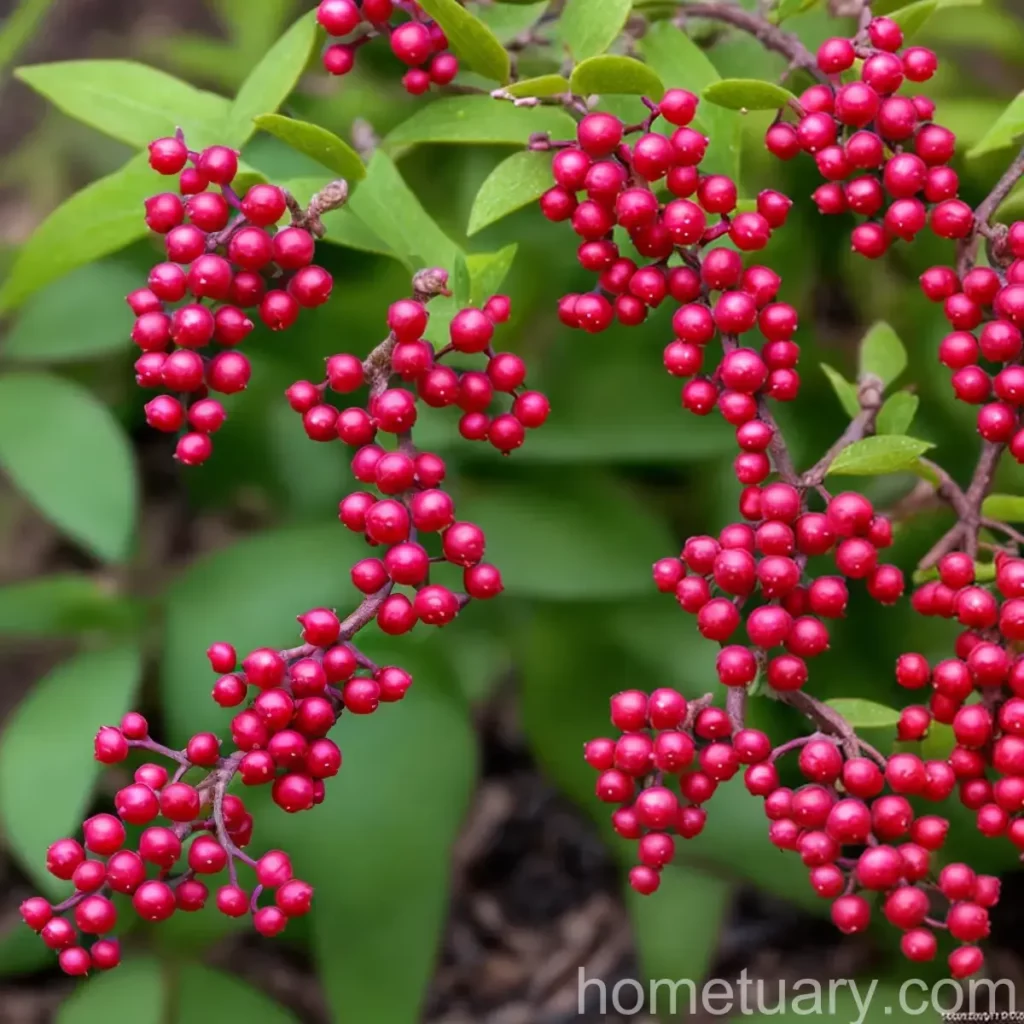Japanese Barberry (Berberis thunbergii ‘Pygruzam’ PYGMY RUBY): A Complete Guide for Garden Enthusiasts
Introduction
Plants play a crucial role in our ecosystem and significantly contribute to the aesthetic appeal of home gardens. One such fascinating plant is the Japanese barberry, scientifically known as Berberis thunbergii ‘Pygruzam’ PYGMY RUBY. This compact shrub boasts vibrant foliage and is valued for its ornamental appeal. In this comprehensive guide, we will delve into the cultivation, uses, maintenance, and intriguing characteristics of the Japanese barberry, catering to both novice and experienced gardeners.
What is Japanese Barberry (Berberis thunbergii ‘Pygruzam’ PYGMY RUBY)?
The Japanese barberry, with the botanical name Berberis thunbergii ‘Pygruzam’ PYGMY RUBY, is a dwarf, deciduous shrub that is native to Japan and eastern Asia. This ornamental plant belongs to the Berberidaceae family and is renowned for its exceptional ornamental qualities. From its compact size to its stunning foliage, the Japanese barberry is a popular choice for landscaping and home gardens.
Key Takeaways
Japanese Barberry (Berberis thunbergii ‘Pygruzam’ PYGMY RUBY)
- Compact and dwarf in size
- Vibrant foliage
- Ornamental appeal
- Adaptable to various soil types
- Tolerant to different light conditions
- Low maintenance
- Drought tolerant
Culture
The cultivation of Japanese barberry involves understanding its specific requirements, including water, sunlight, fertilizer, soil, and pruning. Let’s explore each of these cultural aspects in detail.
Uses
Landscaping:
The Japanese barberry is a versatile plant that is often used for landscaping due to its compact size and vibrant foliage. It can be used as a border plant, hedge, or as a focal point in garden designs.
Ornamental Value:
With its eye-catching foliage and compact growth habit, the Japanese barberry adds visual interest to any garden or landscape. Its foliage transforms through the seasons, offering varying colors and textures.
Water
Japanese barberry is relatively drought-tolerant once established. However, regular watering is essential during the initial establishment phase. It is important to ensure that the soil around the plant is kept consistently moist but not waterlogged.
Sunlight
The Japanese barberry thrives in well-drained soil and prefers full sun to partial shade. While it can tolerate some shade, optimal foliage coloration is achieved when grown in full sun.
Fertilizer
When it comes to fertilization, Japanese barberry typically thrives in average, well-drained soil without the need for frequent fertilization. However, incorporating organic matter into the soil during planting can promote healthy growth.
Soil
Japanese barberry adapts to various soil types, including loamy, sandy, and clay soils, as long as they are well-drained. Soil pH ranging from slightly acidic to slightly alkaline is suitable for this plant.
Pruning
Pruning is an essential aspect of Japanese barberry maintenance. Regular pruning helps maintain the desired shape, remove dead or diseased branches, and promote new growth. Pruning is typically done in late winter or early spring before the new growth emerges.
Propagation
The propagation of Japanese barberry can be achieved through various methods, including:
- Softwood Cuttings: Softwood cuttings can be taken in late spring or early summer and rooted in a well-draining medium.
- Division: Dividing the plant’s root ball can also be an effective method of propagation, typically done in early spring before new growth appears.
Container Popularity
Japanese barberry is well-suited for container gardening, making it an excellent choice for small gardens, patios, or balconies. When grown in containers, it is important to ensure proper drainage and provide sufficient space for the roots to spread.
Container Common Diseases
When growing Japanese barberry in containers, common diseases to watch out for include root rot and fungal infections. Proper watering and well-draining soil can help prevent these issues.
Disease Diagnosis
Japanese barberry is generally resistant to many diseases. However, it can be susceptible to certain fungal infections, such as powdery mildew and rust. Proper air circulation and management of environmental conditions can help prevent such diseases.
Common Pests
While Japanese barberry is relatively pest-resistant, it can still face infestations from aphids, scale insects, and spider mites. Regular inspection and the use of natural predators or insecticidal soap can effectively manage pest issues.
Botanist’s Tips
When cultivating Japanese barberry in your garden or landscape, consider the following tips:
- Regularly inspect the plant for signs of pests and diseases.
- Prune the plant in late winter to maintain its shape and promote healthy growth.
- Ensure proper drainage when growing Japanese barberry in containers.
- Incorporate organic matter into the soil during planting to provide essential nutrients.
Fun Facts
- The colorful foliage of Japanese barberry changes hues throughout the year, showcasing shades of green, red, and orange depending on the season.
- Japanese barberry is sought after for its wildlife benefits, attracting birds and beneficial insects to the garden.
Links to External Resources
For further information on Japanese barberry, refer to the following resources:
- The Spruce – Japanese Barberry Plant Profile
- Missouri Botanical Garden – Berberis thunbergii
- Royal Horticultural Society – Berberis thunbergii ‘Pygruzam’
In conclusion, Japanese barberry (Berberis thunbergii ‘Pygruzam’ PYGMY RUBY) is a captivating plant that offers both visual appeal and ease of maintenance. Whether used as a standalone specimen or as part of a diverse planting scheme, its vibrant foliage and adaptability make it a valuable addition to any garden. By understanding its specific cultural requirements and leveraging botanist’s tips, garden enthusiasts can successfully cultivate and enjoy the beauty of the Japanese barberry in their outdoor spaces.















